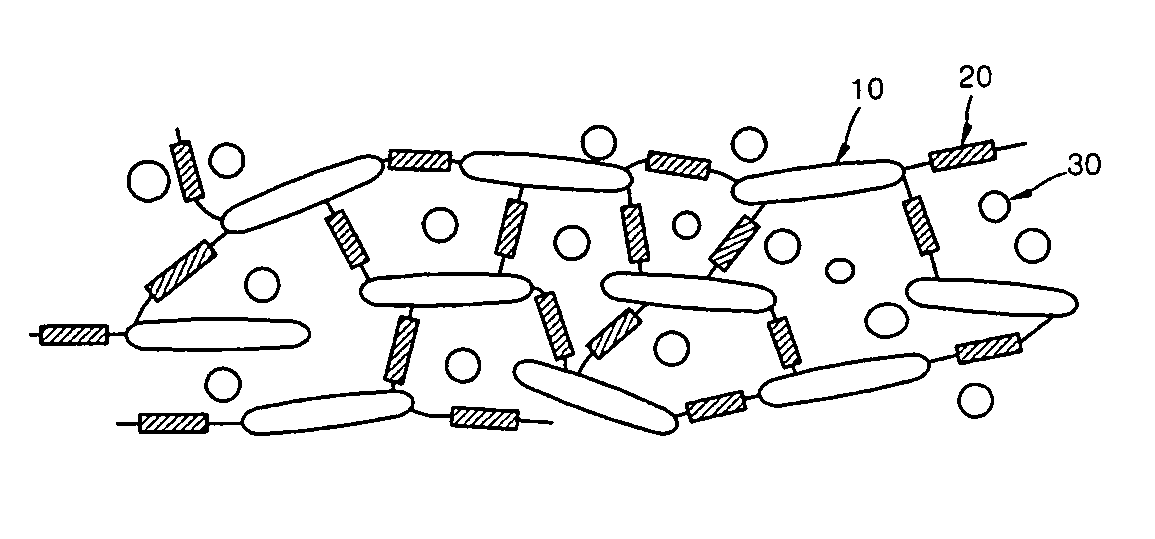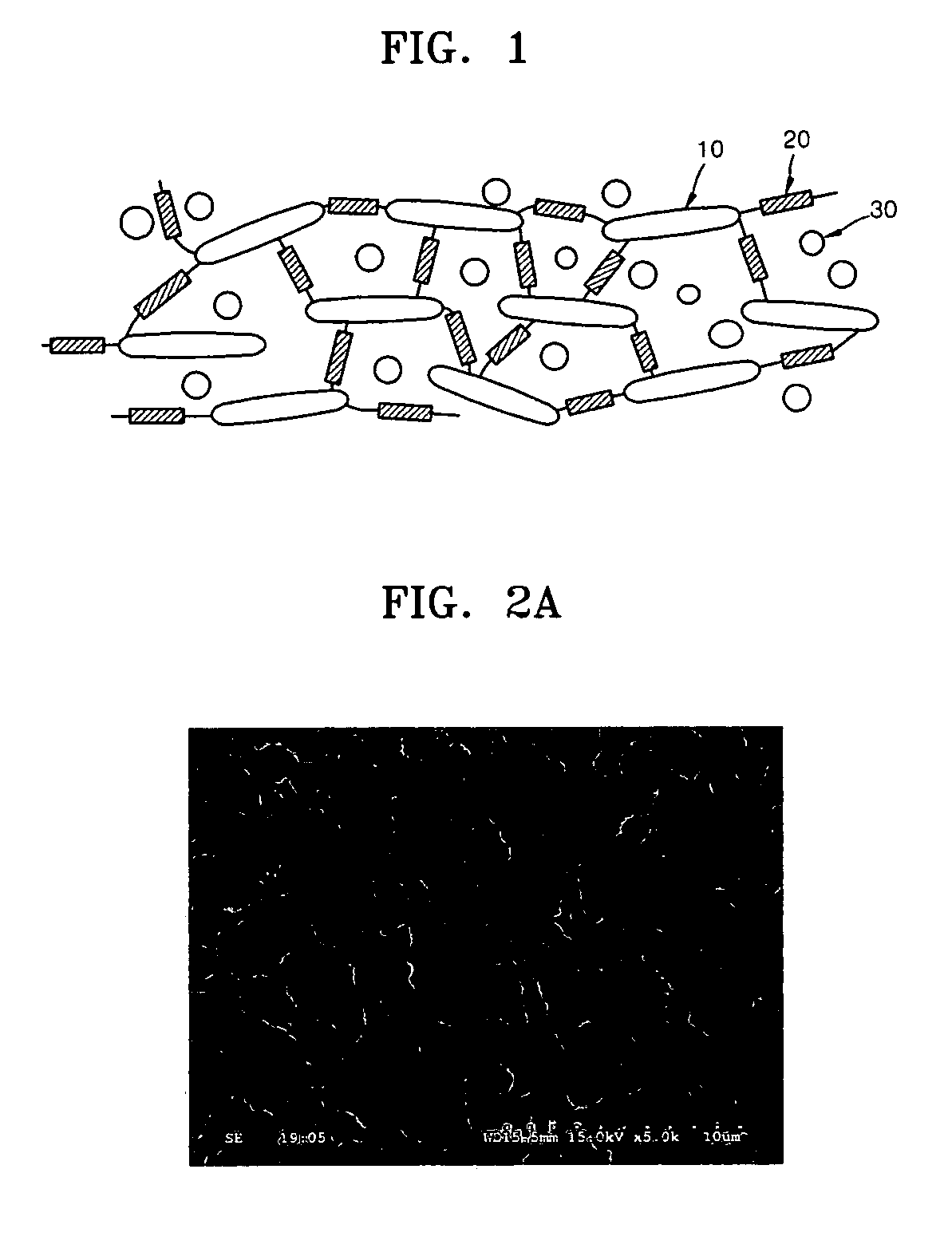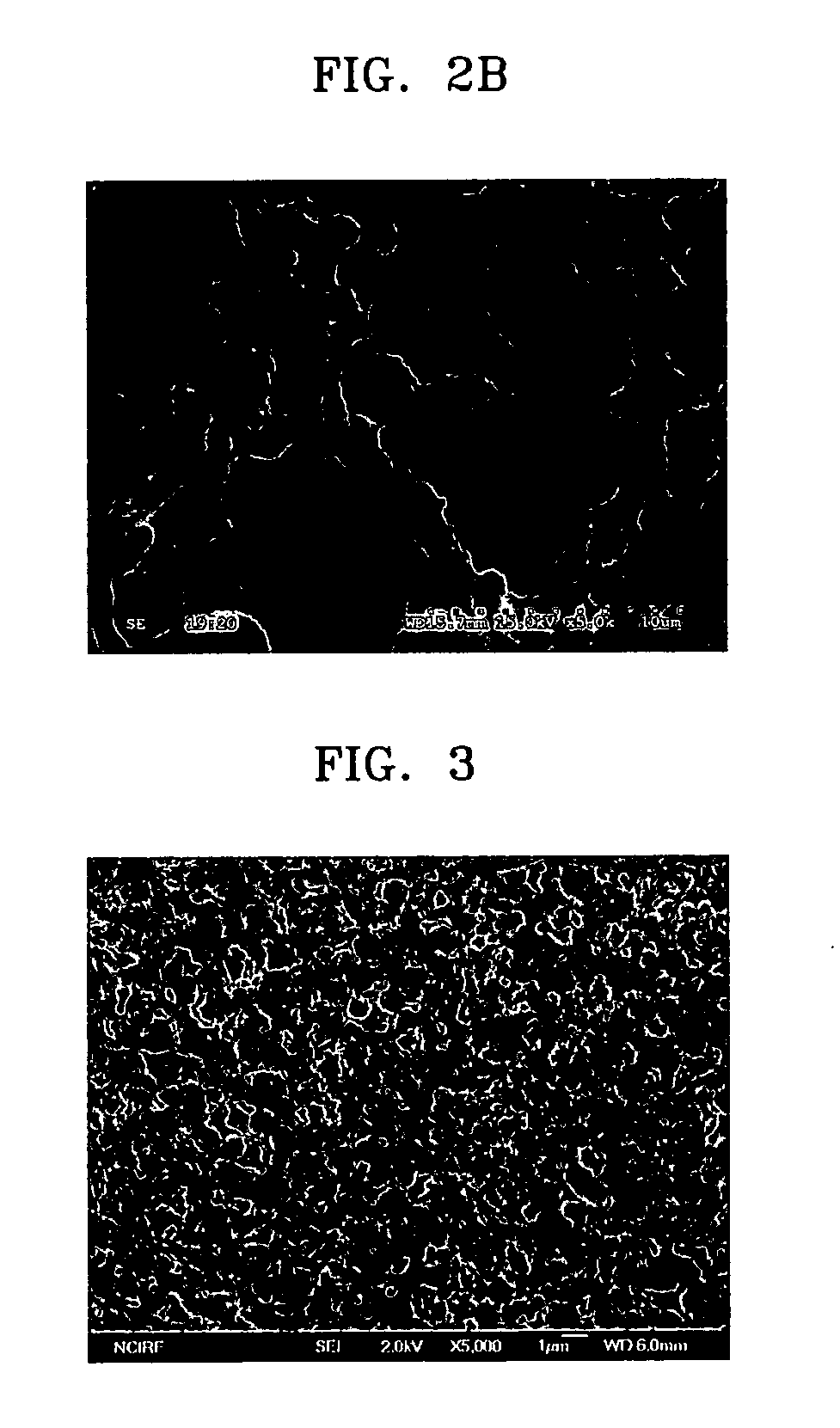Ion conductive composite membrane using inorganic conductor and method of manufacturing the same
a technology of inorganic conductors and composite membranes, which is applied in sustainable manufacturing/processing, physical/chemical process catalysts, other chemical processes, etc., can solve the problems of unstable bonding in the operating conditions of fuel cells, and inability to completely prevent the crossover of polar organic liquid fuel. , to achieve the effect of reducing ion conductivity and effectively preventing liquid fuel crossover
- Summary
- Abstract
- Description
- Claims
- Application Information
AI Technical Summary
Benefits of technology
Problems solved by technology
Method used
Image
Examples
examples 1 through 3
[0086] 5 g of exfoliated phosphate platelet, 5 g of TEOS, and 0.05 g of Na3PW12O40.xH2O as a polyoxometalate were mixed, and then 0.5 ml of 1.0 M nitric acid was added thereto, thereby forming a gel mixture at 50° C.
[0087] Mixed cellulose ester (see FIG. 2A) was used as a porous base material. The pore size of the porous base material was 3 μm, and the thickness thereof was 110 μm.
[0088] The gel mixture was repeatedly spin-coated on the porous base material so that coating layers respectively having thicknesses of 1, 3, 5 μm were formed, thereby forming an ion-conductive organic / inorganic composite membrane. The spin-coating was performed at 1000 RPM for 10 seconds.
[0089]FIG. 3 is a scanning electron spectroscopy (SEM) image of a surface of an ion-conductive organic / inorganic composite membrane of Example 2.
examples 4 through 6
[0090] 5 g of exfoliated phosphate platelet, 5 g of TEOS, and 0.05 g of Na3PW12O40.xH2O as a polyoxometalate were mixed, and then 0.5 ml of 1.0 M nitric acid was added thereto, thereby forming a gel mixture at 50° C.
[0091] Cellulose nitrate (see FIG. 2B) was used as a porous base material. The pore size of the porous base material was 8 μm, and the thickness thereof was 120 μm.
[0092] The porous base material was immersed in the gel mixture for 36 hours so that the gel mixture was impregnated thereinto. The immersion process was repeated to form coating layers respectively having thicknesses of 1, 3, 5 μm, thereby forming an ion-conductive organic / inorganic composite membrane.
[0093]FIGS. 4A and 4B are SEM images illustrating an inner cross-section and a surface of the ion-conductive organic / inorganic composite membrane manufactured in Example 5, respectively.
[0094]FIG. 5 is a graph of ion conductivity measured at 90° C. of the ion-conductive organic / inorganic composite membranes ...
examples 7 and 8
[0097] Concentrations of the methanol solution were measured in the same manner as in Comparative Example 1 except ion-conductive organic / inorganic composite membranes of Example 2 and 5 were used instead of the NAFION membrane, respectively. The results are shown in Table 1.
TABLE 1Time (minutes)Example 7Examples 8Comparative Example 105.05.05.0105.05.04.5204.94.94.0304.94.93.6404.94.93.2504.84.92.9604.84.92.6
[0098] Referring to Table 1, the ion exchange organic / inorganic composite membrane of an embodiment of the present invention prevents the crossover of methanol. However, for the conventional NAFION membrane, the methanol concentrations in both sides of the membrane become about equal after 60 minutes due to the methanol crossover.
PUM
| Property | Measurement | Unit |
|---|---|---|
| thickness | aaaaa | aaaaa |
| thickness | aaaaa | aaaaa |
| thickness | aaaaa | aaaaa |
Abstract
Description
Claims
Application Information
 Login to View More
Login to View More - R&D Engineer
- R&D Manager
- IP Professional
- Industry Leading Data Capabilities
- Powerful AI technology
- Patent DNA Extraction
Browse by: Latest US Patents, China's latest patents, Technical Efficacy Thesaurus, Application Domain, Technology Topic, Popular Technical Reports.
© 2024 PatSnap. All rights reserved.Legal|Privacy policy|Modern Slavery Act Transparency Statement|Sitemap|About US| Contact US: help@patsnap.com










